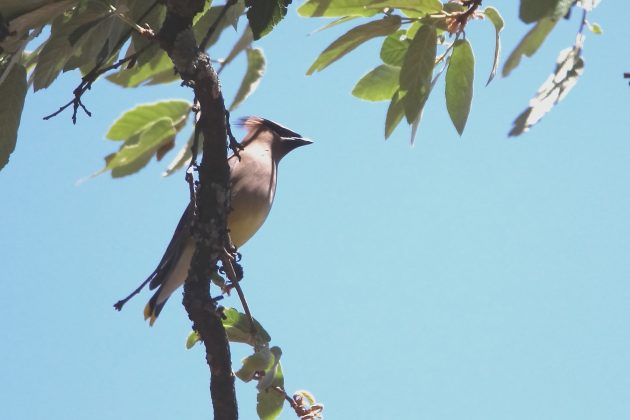Two months ago, I wrote about seeing one of Mexico’s really special endemic birds: the Aztec Thrush. This bird beauty is quite subtle. But it is rare, well-camouflaged, not site-loyal, and almost always silent. It can only be found, as of this writing, in 594 eBird lists, which would place it high on most birders’ wish list. I live within the heart of its rather limited range, but until this year, had only seen this species three times. I suggested that any of our readers who visit Morelia NOT ask me to show them Aztec Thrushes, as I had no idea how to produce further sightings on demand.
As I mentioned in that early February post, I had just gone to a forest that was severely burnt the previous spring. I knew I would see lots of Gray Silky-Flycatchers there, as they love burnt-over forests. What I did not expect was an equal increase in the occurrence of American Robins. And that those Robins would be accompanied by a pair of Aztec Thrushes, which gave me some beautiful photos.
So this week, I went back to the same burnt forest, to see whether I might have finally found a habitat that could encourage those Aztec Thrushes to settle down for a while.
One change had occurred since my first visit. Two months further away from our “rainy” season (which wasn’t very rainy at all, this year), the burnt area’s huge bloom of Salvias had ended, and most of the super-abundant hummingbirds seen in that first visit had moved on. But the Robins and Silky-Flycatchers certainly hadn’t. I couldn’t possibly have counted them accurately as they wheeled overhead, but I certainly saw many dozens of each.
The Silky-Flycatchers were more colorful than I had ever seen. Considering the month, I suspect it’s a sex thing.

But were there any Aztec Thrushes? Well, I can’t offer any great photos. But the numbers speak for themselves. Here is Aztec Thrush #1:

#2:

#3:

And #4:

If you want to see good photos of Aztec Thrushes, you can see several in my February post.
These birds were all seen quite far from one another. So I can say with some confidence that if I hadn’t seen them all, I would certainly have seen some. In fact, I don’t doubt that I missed one or more.
So, it turns out that maybe you CAN ask for an Aztec. All you need is a large swath of seriously burnt forest. Unfortunately.
The forest, by the way, is already showing many signs of new life. The pines’ survival strategy seems to be to die in the fire, and then have an astonishing crop of new seedlings the following year. Other trees, especially oaks, survive by sprouting from their burnt trunks, or in the worst scenario, from the roots. I will make sure to follow this forest’s recovery over the next few years.


I had gone to this site specifically looking for my fifth encounter with Aztec Thrushes. But I certainly didn’t expect to also see a small flock of Cedar Waxwings, a complicated species here in Mexico. I saw them once in the spring of 2018, fifteen times in the irruption spring of 2021, and last spring gave me another three sightings. But this was my very first sighting this spring. Perhaps Waxwings are another fire-loving species?

I’ll finish with a pair of Black-headed Grosbeaks, male and female. Not the best photos, but certainly lovely birds.


Source link

